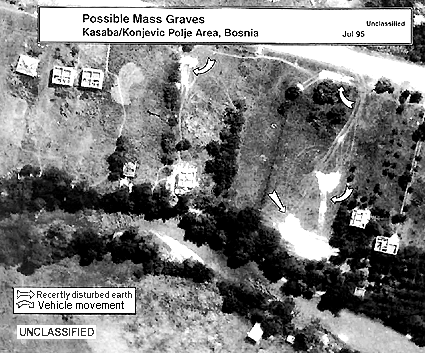 
|
|
(Spy) " targets--such as international terrorism, crime, and drug trafficking--present their own problems. For instance, counterterrorism operations seek to prevent terrorist acts. Yet taking preemptive action usually entails revealing that the U.S. government was in a position to know of a terrorist organization's plans, which in turn jeopardizes intelligence sources and methods. Intelligence professionals must work closely with law enforcement officials to ensure that these sources and methods are not compromised in the process of providing foreign intelligence to the law enforcement community. The same holds true for counternarcotics operations. "
" Environmental monitoring is another new target. Vice President Al Gore led an effort to make available hundreds of thousands of reconnaissance satellite images. Some 800,000 declassified images processed by the National Reconnaissance Office between 1960 and 1972, released in February 1995, are available on the Internet. Similarly, both France and Russia are offering satellite imagery for sale to commercial and other customers, a practice likely to spread. Environmental targets are becoming part of the tasking of imagery satellites. But intelligence personnel who interpret such images may find that expertise in identifying the signatures of Soviet military forces does not necessarily translate into a facility for addressing environmental issues. " Some new targets seem to fit a traditional mold yet actually differ drastically. For example, the intelligence community traditionally supported U.S. intervention operations by providing early warning of volatile situations. But this role is greatly complicated to the extent that the issues driving U.S. foreign policy are unclear. As Les Aspin, the late chairman of the Commission on Roles and Capabilities of the U.S. intelligence community, noted, "Using the military to protect our values overseas... drives the intelligence community crazy because there is no way to anticipate where values issues might crop up next." " Another example is the use of satellite photos to detect a new kind of suspicious military activity, namely, war crimes, as in Bosnia. Such use creates great pressure to reveal photo data, which the U.S. has traditionally been extremely reluctant to do. Indeed, after revealing evidence of mass graves dug by Bosnian Serb forces, the U.S. was not willing to provide all of its intelligence on the subject to the international tribunal judging war crimes in the former Yugoslavia. " Overhead photo of possible Serb war crimes site, displayed to the U.N. Security Council 
While adaptation to these circumstances has been reasonably successful, it has not been without problems. Most means of collection--in particular, satellite imaging--were designed to cover the Soviet Union. Within the constraints of physics, satellites have been adapted through new technologies to cover targets for which they were not originally designed. According to John Pike of the Federation of American Scientists, the new 8X satellite can take high resolution photos of 1,000 square miles at a time, compared to 100 square miles for the KH-12 satellite it is replacing; if so, the wider coverage should reduce this problem. However, certain targets remain outside their range and must be accessed by alternative collection means, sometimes with the assistance of foreign partners who are unproven allies. " AFCEA/NAVY ASW CONFERENCE, 3-4 DEC 96 U.S.A. Strategic Assessment 1996 Chapter Six: Intelligence |


DDI John Gannon Testimony to Joint SSCI SFRC Open Hearing - 9 August 1995 
Handout Given at Testimony - 9 August 1995 Mario's note: If you don't know, a syntagm "ethnic cleansing" is nothing else but a well known diplomatic euphemism for the genocide. Ethnic cleansing 
Mosque destroyed by explosives, 1993 Mass Graves
|


Air Strikes, September 1995 U.S. Department of Defense
U.S. Department of Defense Briefings Pre-strike and Post-strike Images - 1 Sep 95 Post-strike UAV Images - 13 Sep 95 Pre-strike UAV Image - 10 Sep 95 Post-strike UAV Image - 11 Sep 95 Post-strike UAV Image - 10 Sep 95 Post-strike UAV Image - 10 Sep 95 |

 Quick Bird Satellite Imagery
Quick Bird Satellite Imagery